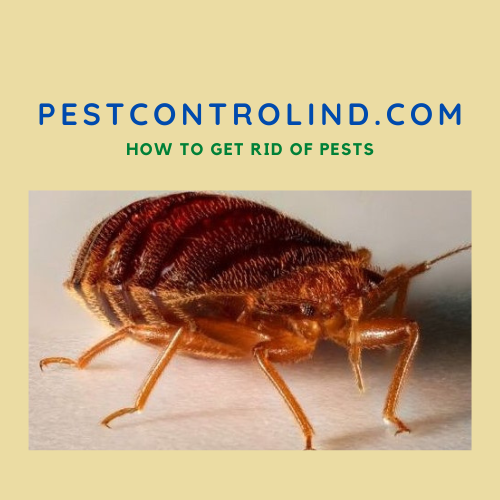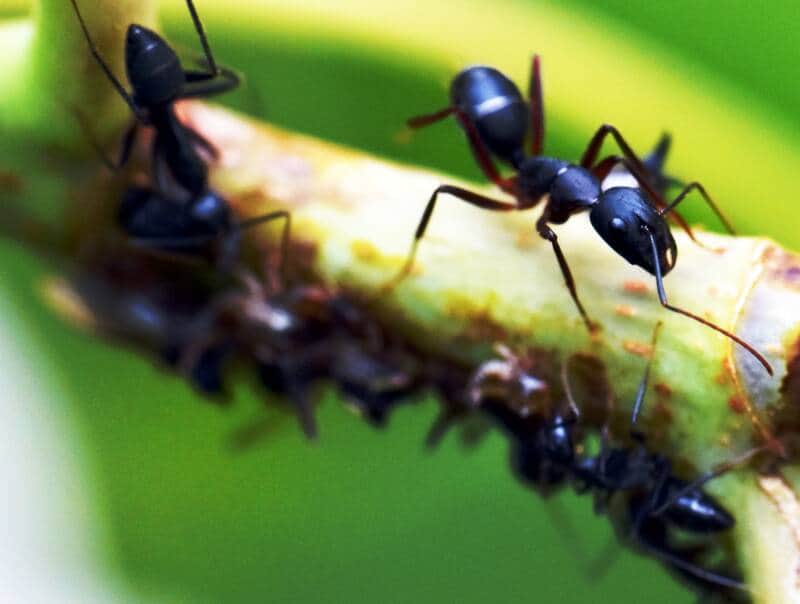Black ants bite is a topic that elicits a mixture of intrigue and concern. Often considered a minor nuisance, these bites can nevertheless raise valid questions for those who experience them.
Let’s explore together the intriguing phenomena of black ant bites – decoding their nature, mitigating undue apprehension, and arming ourselves with valuable information.
I. Do black ants bite?
For starters, black ants – colloquially referred to as common ants or garden ants – rarely bite humans. These industrious insects are primarily perceived as a nuisance, but rarely dangerous.
Their feeding habits largely encompass plant nectar, aphid honeydew, and small insects; therefore, their interaction with humans is often harmless.
However, departing slightly from this general consensus, black ants belonging to certain species possess the ability to bite when provoked.
Notably, the genus ‘Formica’, frequently referred to as ‘wood ants’, can indeed bite. However, it is essential to specify that this biting is above all a defensive maneuver, generally triggered under threat.
This biting action, interestingly, is not their main defense. Instead, these ants resort to spraying formic acid, a substance in their abdominal reservoir, on the perceived threat. Although their stings may be somewhat uncomfortable, the release of formic acid tends to cause more discomfort.
Similarly, the larger “carpenter ants” ( Camponotus ) may also bite if threatened, using their substantial mandibles. Although infrequent, these bites can cause mild, transient pain, but are rarely a cause for serious concern.
In contrast, the common black ant (Lasius niger) is not generally known to bite humans, further reinforcing the statement that not all black ants bite.
Thus, it is extremely important to discern the different species when it comes to the biting ability of black ants. While a few species may indeed bite when threatened, the majority do not engage in such behavior.
Therefore, the likelihood of being bitten by a black ant is relatively low, barring intentional provocation or an accidental encounter.
1. Do all species of black ants bite?
Firstly, black ants, an umbrella term, encompasses numerous species, each with unique behavioral attributes.
Interestingly, it’s not a universal trait among them to bite.
For instance, the Black House Ant (Lasius niger), a common species, typically refrains from biting humans.
These ants’ lifestyle, mainly revolving around plant nectar, aphid honeydew, and small insects, doesn’t usually involve human interaction.
Conversely, some species, like the Wood Ants (Formica) and Carpenter Ants (Camponotus), under specific circumstances, will bite.
Understandably, this occurs as a defensive response, not out of unprovoked aggression.
The bite can cause a brief sting, but it’s the accompanying spray of formic acid from their abdomen that leads to more noticeable discomfort.
2. What are the symptoms of a black ant bite?
Primarily, not all black ant species bite. However, those that do, like Carpenter Ants (Camponotus) or Wood Ants (Formica), generally induce minor symptoms.
Initially, a sharp, short-lived pain, akin to a pinprick, is most commonly felt at the bite site.
This discomfort, while mild, is a direct consequence of the ant’s mandibles piercing the skin.
Subsequently, the bite might result in a small, raised welt, frequently surrounded by a halo of reddened skin. Remarkably, this isn’t just due to the physical bite, but also the formic acid these ants excrete during such incidents.
This acid might instigate a minor burning sensation, further contributing to the localized discomfort.
Less commonly, itching may also ensue, persisting for a few hours to a couple of days.
However, severe reactions like blistering or extensive skin reactions are notably rare. Therefore, black ant bites, though unpleasant, are ordinarily harmless and self-limiting.
3. Do black ants bite pets?
Their lifestyle, revolving around plant-based sources and small insects, seldom involves interaction with larger creatures like household pets. Hence, bites inflicted on pets by black ants are relatively uncommon.
However, certain species, such as Carpenter Ants (Camponotus) and Wood Ants (Formica), are known to bite in response to threats.
Therefore, if a pet were to disrupt an ant colony or directly engage with these ants, a bite could potentially occur.
II. What happens if a black ant bites You?
1. How to treat black ant bites
Firstly, upon experiencing a black ant bite, immediate action is to cleanse the affected area with soap and water. This simple yet crucial step aids in reducing potential infections and mitigating the effect of any formic acid left by the ant.
Next, applying a cold compress or an ice pack, wrapped in a thin cloth to avoid direct contact with the skin, can significantly help in soothing the sting and reducing inflammation. Maintaining the compress for about 15 minutes at a time provides optimal relief.
To further alleviate itching and discomfort, over-the-counter treatments such as hydrocortisone cream or calamine lotion can be applied.
For those with more sensitive skin types, an antihistamine cream or oral antihistamine may be beneficial.
Remember, avoid scratching the area as it can worsen the situation, potentially leading to infection. In case of severe reactions, it’s advisable to consult a healthcare professional promptly.
2. Allergic reaction to black ant bites?
An allergic reaction to a black ant bite, technically referred to as anaphylaxis, is an overreaction of the immune system.
The response typically extends beyond the usual localized symptoms like minor pain, redness, and a small welt.
Instead, systemic symptoms may arise such as severe swelling, difficulty in breathing, dizziness, or a rapid heartbeat.
If you or someone around you experiences an allergic reaction to a black ant bite, immediate medical attention is of utmost importance.
Dialing emergency services should be your first step.
Pending medical attention, if the person has a known severe allergy and carries an epinephrine auto-injector (EpiPen), it should be used as directed.
Simultaneously, try to keep the person calm, as panic can exacerbate the symptoms. If possible, position the person flat on their back and elevate their legs.
3. How long does a black ant bite last?
The immediate discomfort from a black ant bite often likened to a sharp pinch, is typically transient. However, localized redness and swelling may persist.
Generally, these symptoms gradually diminish over a period of a few hours to a couple of days.
Importantly, complications like infection, which might prolong healing, are rare but could occur if the bite site is excessively scratched.
Hence, proper care and avoiding scratching are essential to expedite recovery and mitigate complications.
III. How to get rid of black ants
After identifying the ants in question, your first step should be to locate their trails and nests, which are often located near water and food sources. you will often find them along the foundation of your house, in the walls, or under the ground.
A fundamental aspect of ant control is the removal of attractants.
This means maintaining a clean living environment, especially in the kitchen and dining room.
Avoid leaving food uncovered, clean up spills promptly, and make sure garbage cans are tightly closed.
Next, consider using ant bait. This is food mixed with slow-acting pesticides, which the ants bring back to their colony.
Over time, this method can effectively eliminate the entire colony, including the queen.
Alternatively, you can use insecticidal sprays or dust on identified ant trails.
Keep in mind, however, that these methods are generally less effective as they tend to only kill the ants you see, leaving the colony untouched.
IV. What attracts black ants to homes?
The main factors that draw black ants into residential areas are food, water, and shelter – the essential prerequisites for their survival and proliferation.
Food sources play a dominant role in attracting black ants. These insects have a varied diet, primarily consisting of sugary substances and protein-based foods.
In a typical household setting, they are attracted to sweet substances such as syrup, honey, fruit, and sugar. Equally enticing are crumbs, grease, meat, pet food, and other protein-rich leftovers.
Unsealed food containers, uncleaned dishes, and residues left on countertops provide a virtual feast for these tiny creatures, drawing them into your home.
Next to food, water is another significant attractant for black ants. They require a reliable water source to survive, and homes often unwittingly provide plenty of them.
Leaky faucets, damp sponges, houseplants, or pet water dishes can serve as a water source, particularly during dry periods.
Aside from food and water, black ants seek shelter that provides a conducive environment for their colonies.
They typically prefer quiet, undisturbed spaces where they can build their nests.
Wall cavities, under-floor spaces, the insulating foam of refrigerators, and even tiny cracks in walls can serve as perfect nesting spots.
It’s also worth noting that certain species of black ants are attracted to electrical currents and are often found nesting around wiring and electrical outlets.
V. Other Questions about black ants bite
1. are black ants poisonous to eat?
It is well-known that most species of black ants are not toxic to humans when eaten in very small amounts.
Ants of the Formicinae family, including the common black ants (Lasius niger) found in many homes, produce formic acid as a defense mechanism, but this substance is not harmful if ingested in small amounts.
This is because the concentration of formic acid in ants is relatively low, and it breaks down quickly in the human digestive system.
2. What is the difference between a carpenter ant and a black ant?
Carpenter ants (Camponotus spp.), named for their wood-dwelling tendencies, are one of the larger ant species, typically ranging from 6 to 13 millimeters in length.
They are predominantly black, but their body color can also exhibit reddish or yellowish hues. Critically, carpenter ants are known to nest within wood – importantly, they don’t eat it like termites – causing structural damage over time. They excavate the wood to create their nests, often in damp or damaged wood.
Contrarily, the common black ant (Lasius niger) – smaller and usually between 1 and 4 millimeters – is named for its uniformly dark coloring.
These ants exhibit a preference for sugary substances and are less destructive to human-made structures than their carpenter counterparts.
They typically nest in soil, under stones, or in the cavities of walls and wood.
Furthermore, the ants differ in their antennae: carpenter ants have a gradually convex profile with no distinct elbow, while black ants have a sharp elbow.
4. Can black ants carry diseases?
Black ants, as well as most insects, can potentially carry various diseases.
These industrious foragers roam far and wide in search of food, often traversing unhygienic areas such as garbage piles and decaying matter, thereby getting exposed to a host of bacteria and pathogens.
Consequently, they may inadvertently transfer these microorganisms to our living spaces, and, most alarmingly, our food.
Yet, it should be noted that even if the potential risk is present, it is relatively very very low.
There are far more notorious disease spreaders in the insect kingdom, like mosquitoes and ticks. Most household ants are more of a nuisance than a significant health threat.
5. Are black ants worse than red ants?
In the world of pest control, red ants, particularly fire ants, are often seen as more problematic.
Their sting, delivered by injecting venom, can lead to intense discomfort, welts, and in rare cases, serious allergic reactions. Additionally, fire ants are known for their aggressive defense mechanisms and rapid colonization, making their eradication particularly challenging.
Conversely, black ants, like the common pavement ant, are typically less aggressive and their bites, while can cause mild irritation, are often considered less painful. However, certain species such as the carpenter ant, a black ant, can cause significant structural damage to homes by tunneling through wood to build their nests.
In essence, whether black ants or red ants are ‘worse’ is influenced by a multitude of factors including the specific species in question, the location, and the individual human’s reaction to them.
Therefore, any issue involving these insects would benefit from a nuanced understanding of the situation, ultimately leading to more effective pest control strategies.

